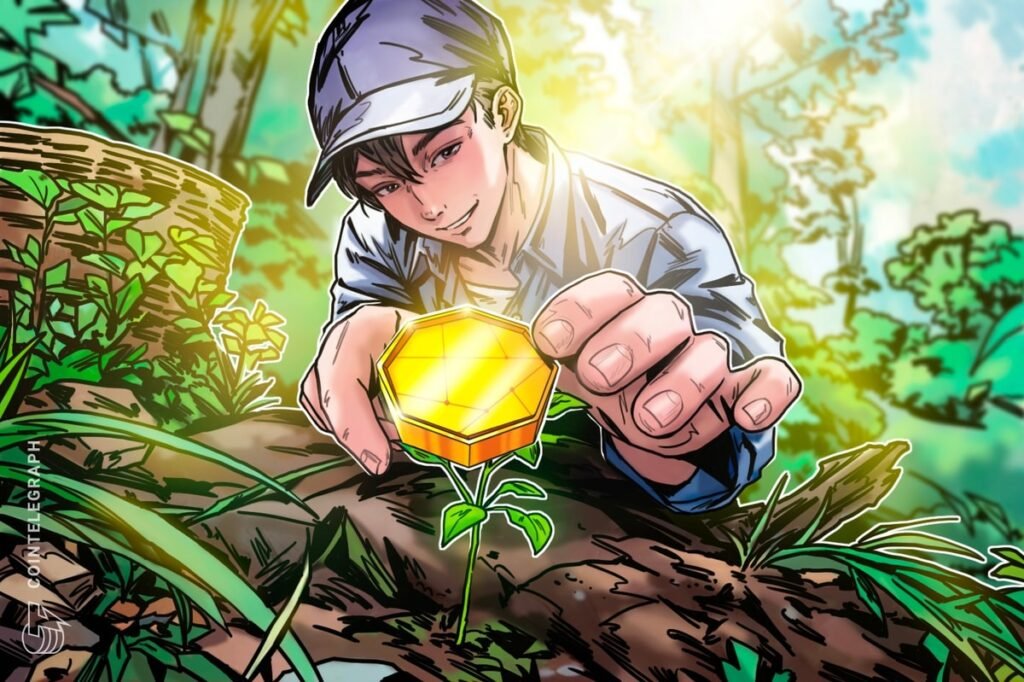tl; dr
Discovering the next big crypto project before it explodes requires data, discipline and keen eye on the actual signal. This guide explores how to identify early winners by analyzing on-chain metrics, talknomics, development activities and community traction, while avoiding the common traps of hype-driven pumps and red flag projects.
The crypto space is busy, fast moving and full of noise, but some investors can consistently find promising projects while still under the radar.
So, how do they do that?
Crypto Trendspotters knows how to read Onchain data. They understand talknomics. They followed the money by reading Github Commits. You need more than jumping on the hype bandwagon in front of the crowd.
This guide categorizes how to find crypto projects with real potential using lessons from past winners such as Solana, arbitrum, chain links, and even memocoins like Pepe. Along the way, we highlight the differences between important tools, red flags to avoid, and organic growth and manufactured buzz.
How the real winner took off
Solana
When Solana was released in 2020, no one outside of the developer circle had heard of it. But it had one big edge: speed. Solana’s history proof technology made it one of the fastest chains around, and quickly became a magnet for the builders, especially with Defi and NFT. By 2021, its ecosystem had exploded with apps such as Serum and Magic Eden.
Early adopters who paid attention to Onchain’s growth, such as wallet activity and Dex volume, could see something brewed. Solana (Sol) went from under $1 to over $50 in less than a year.
Arbitrum
Arbitrum was released in 2021 as Ethereum Layer 2, but that big moment took place in March 2023 with an Arbitrum (ARB) token airdrop. At launch, Arbitrum was already handling more transactions than many Layer 1, and total values are locked in distributed applications (DAPP) (TVL).
A smart investor was watching. Even in front of the token, the signs were there: user activity, increased liquidity, and growth in app adoption. When the ARB fell, the foundation was real and the pump was clogged.
ChainLink
ChainLink is a classic example of a project with long-term utility. There’s no flashy branding or meme power, but it works very well. It involves sending actual data into a smart contract.
By 2024, it had become the backbone of many debts, games, and even tokenized real-world assets. 2019 – If I had been looking closely in 2020, I found that links (links) were integrated everywhere. Such early utilities often fly under the radar until price action catches up.
Pepecoin (Pepe)
Don’t pretend to be a meme. Pepe (Pepe) was launched in 2023 without roadmap, utility or VC backing. But it hit a nerve and the internet ran with it. The coin reached a market capitalization of $1 billion within weeks.
Such a driving is rare and dangerous. But for traders tracking social emotions, wallet distribution and community activity, all the early signals were there. Pepe promised nothing, but offered a return by becoming a viral moment.
How to find code gems early
So how do you separate the next Solana from the next lag pull? Here’s how Trendspotters approaches a serious approach:
1. Start with on-chain metrics
Public blockchains are transparent. Using it:
If users and capital are moving before the month of tokens, that’s a great sign. Tools like Dune Analytics, Nansen, Defillama and more are your best friends here.
2. Understanding talknomics
Ask the following questions:
What is the total supply? How much circulation is?
Are there any future unlocking or vesting cliffs?
Who holds the token? Also, how concentrated is the top wallet?
Are there any utility available? Do you want to do a token?
Tokens with capped supply, smart incentives (such as staking and burn mechanisms), and fair distribution models tend to do better in the long run.
3. Check the developer activity
Is the team actually building?
Github is a gold mine. Look at how often your code is pushed, how many active contributors are, and whether the repository is alive. Have you ever had an update for several months? Big red flag.
There’s no need to read the code – just track commits and releases. Projects with real traction are always shipped.
4. Find ecosystem signals
Are other developers built on top of it? Is the DAP running? Is liquidity growing? Do users come back every week?
Ecosystem growth is difficult to counterfeit, and is often the strongest early indicator of a project having feet.
5. Follow the community
x, discord, telegram, reddit – yes, it’s loud. But that’s also where the trend begins. Looking beyond price:
Do people actually use the product?
Are developers answering questions?
Is the tone constructive or just hype?
Use Lunarcrush or Santiment to track social momentum, but always double check it with Onchain data.
Important tools for finding crypto trends
Here’s a quick overview of the top platforms that Smart Crypto Trendspotters uses:
Top tip: Don’t use one tool. A good trader cross-references everything.
Crypto Trend Analysis 2025
The coin may be flying, but is it because people are actually using it or just talking about it? Learning to communicate the difference can save you from making bad investments.
Real towing signs
User growth and TVL with stable user growth over time: if users appear before the token pump, and if numbers continue to climb over the week, it is usually a sign of material. Often this is a Defi protocol or Layer 2, which often earns trust slowly rather than overnight.
Code Commit and Product Updates: Live Github with regular commits, active developers and visible advancements means your team is building. This shows momentum and a long-term focus — not just marketing push.
More token holders, fewer whale control: when new owners steadily join – and not all supply is trapped in the top five wallets – it’s a healthier set up. Distributed ownership reduces the risk of lag pulls or adjusted dumps.
New Integration and Ecosystem Activities: If other apps integrate tokens or constructions on a protocol, that usually means that the technology is solid and useful. This type of network effect speeds up and often precedes a breakout.
Slowly built liquidity: The gradually increasing of liquidity and trading volume tends to reflect true interest. If fluidity sticks to the surroundings (rather than disappearing after the pump), it is usually organic.
Signs of manufactured hype
A sudden surge in social mentions and trading volume without news: If the project is everywhere on X, all overnight, but there is no product update, launch, or roadmap shift, then you are skeptical. It’s probably a tuned sill.
Influencer Spam and Recycled Stories Point: When you see multiple anonymous influencers posting the same meme or catchphrase, it’s a signal that someone is trying to manufacture a buzz.
No development activities or roadmap: If you don’t have Github, no Changelog, and your team doesn’t ship anything, it’s probably just a hype machine.
Anonymous Team, Absurd Promise: Combining mystery team with claims like “100x Guarantee” you might be looking at cash grabs. Actual builders have the work speak for themselves.
Rule of thumb: If prices are moving, and everything else (users, development, integration) is still, you’re looking at the hype. But when those foundations are silently etched in the background? That’s when it’s worth looking.
Other red flags
Some projects look great on the surface, such as smooth websites, trendy hashtags, and fast moving charts, but collapse under the hood. Here are some red flags to watch out for:
High Holder Concentration: If most of the tokens are sitting in a handful of wallets, the price crash won’t take much time. Whales often buy early and throw them away at retail stores.
Unverified token contracts: Tokens that have not been verified with EtherScan or BSCSCAN may denounce the ability to build, block wallets, or allow liquid drainage. Always check your contract or look for an audit.
No liquidity locks or audits: developers control all liquidity provider tokens and can pull lags at any time if there is no locked or time-locked contract. Similarly, are there no third party audits? It’s gambling.
Big token unlocking is approaching. Big unlocks for insiders and early investors can lead to huge sales. Liquidity may be terminated if it is being held during a major vesting event. I know the schedule.
Top Tip: Before clicking (Buy), ask who gets the most for this pump. Who will get injured if you throw it away? If the answer points to a heavy bag and a few insiders with zero accountability, walk away.
How to find crypto trends in front of crowds
The best early investors are the mechanisms that look under the hood. They study token structures, unlock schedules, join the community early to catch signals directly, and see who is actually shipping according to the builder.
Most importantly, it’s cross-checking everything: on-chain data, social sentiment, developer activity, fluidity and more. Tools like Dune, Defillama, Nansen, Github and others separate noise from the material and help spot winners before the crowd does.
Crypto rewards people who are curious, critical, and a little paradoxical. Crowds usually appear late. If they want to find gems before the moon, you need to think independently, dig deeper, and act before the story.
It’s not easy. But it is viable. And the more you practice the initial signal, the more it becomes a real signal, not a noise, but a second nature.
This article does not include investment advice or recommendations. All investment and trading movements include risk and readers must do their own research when making decisions.

